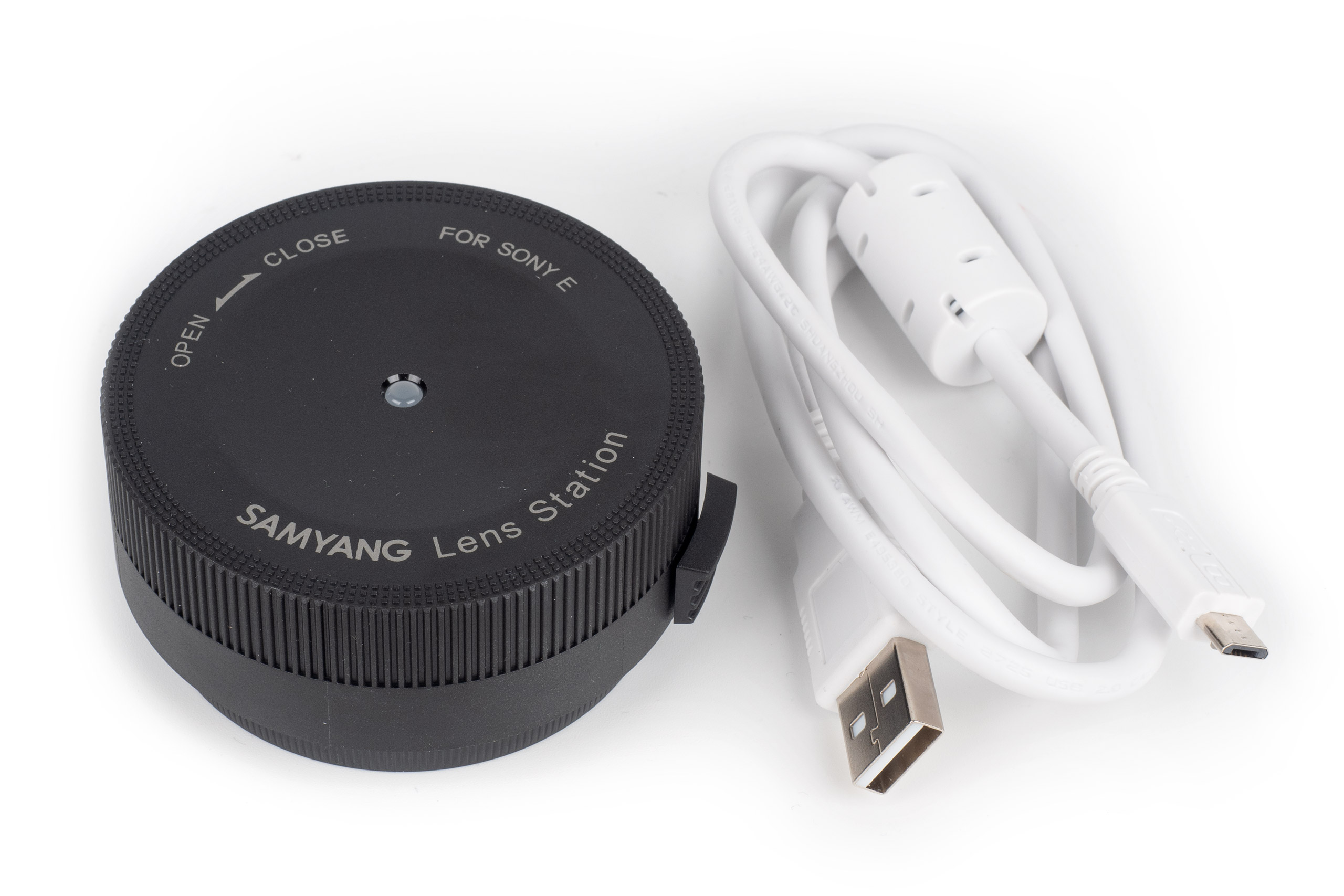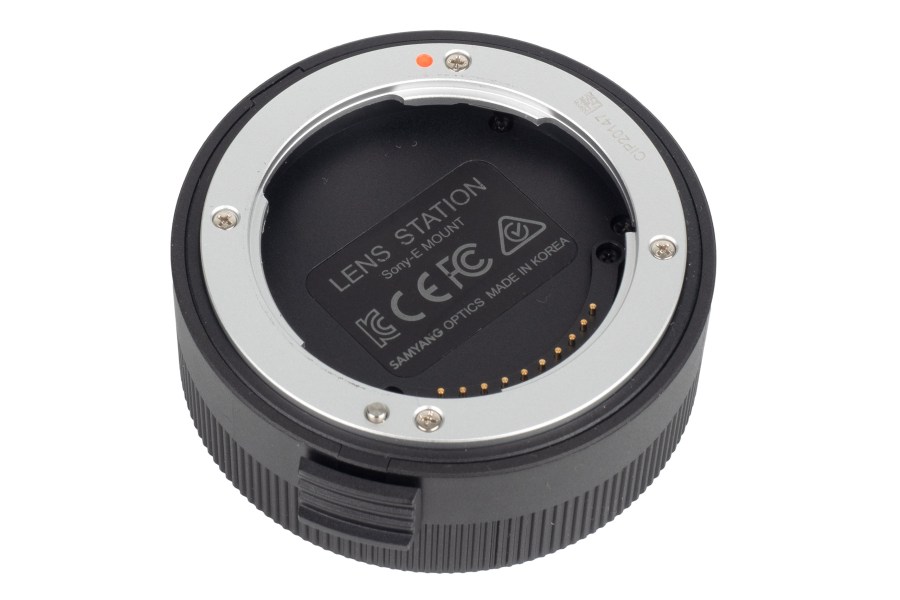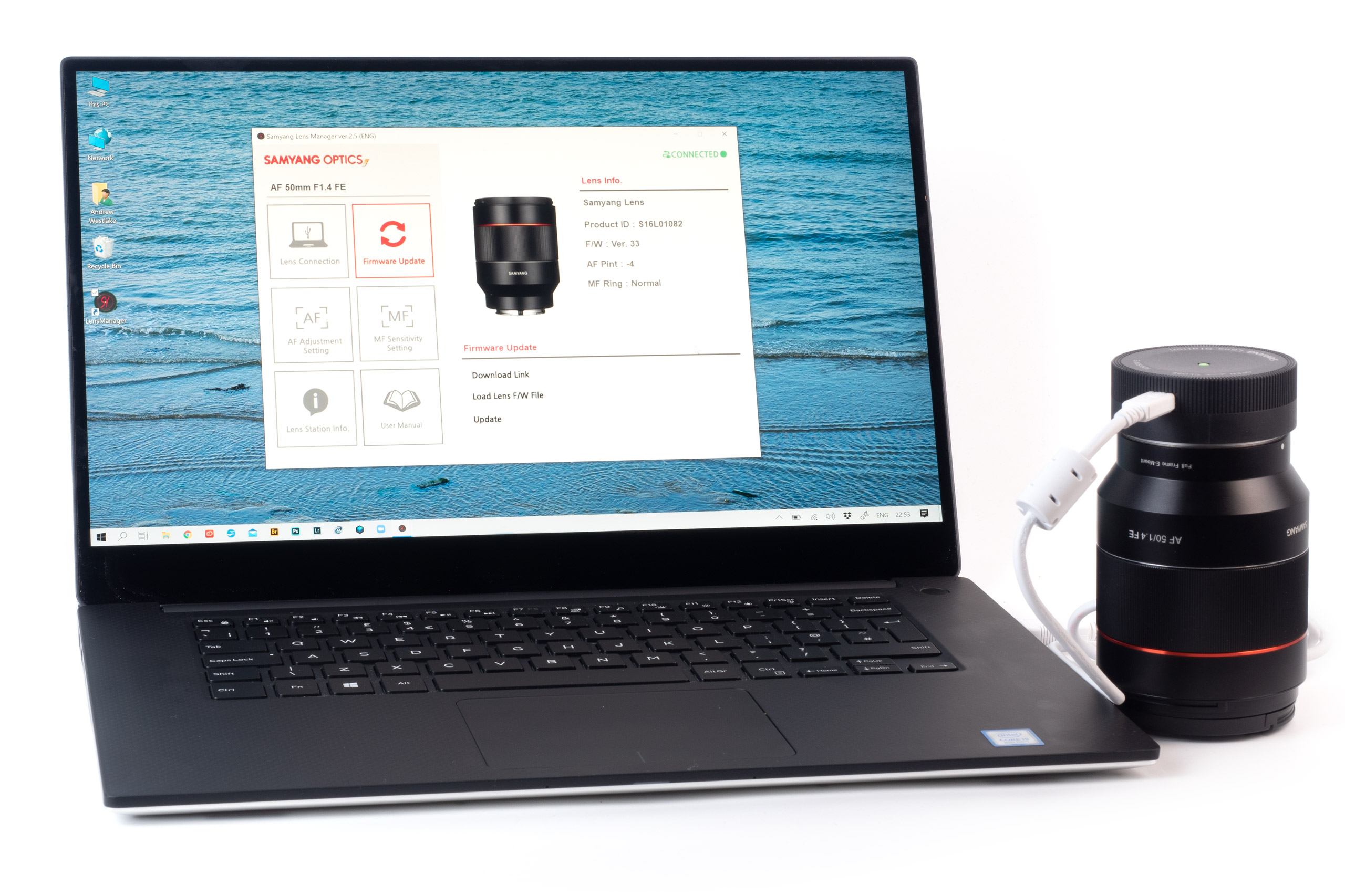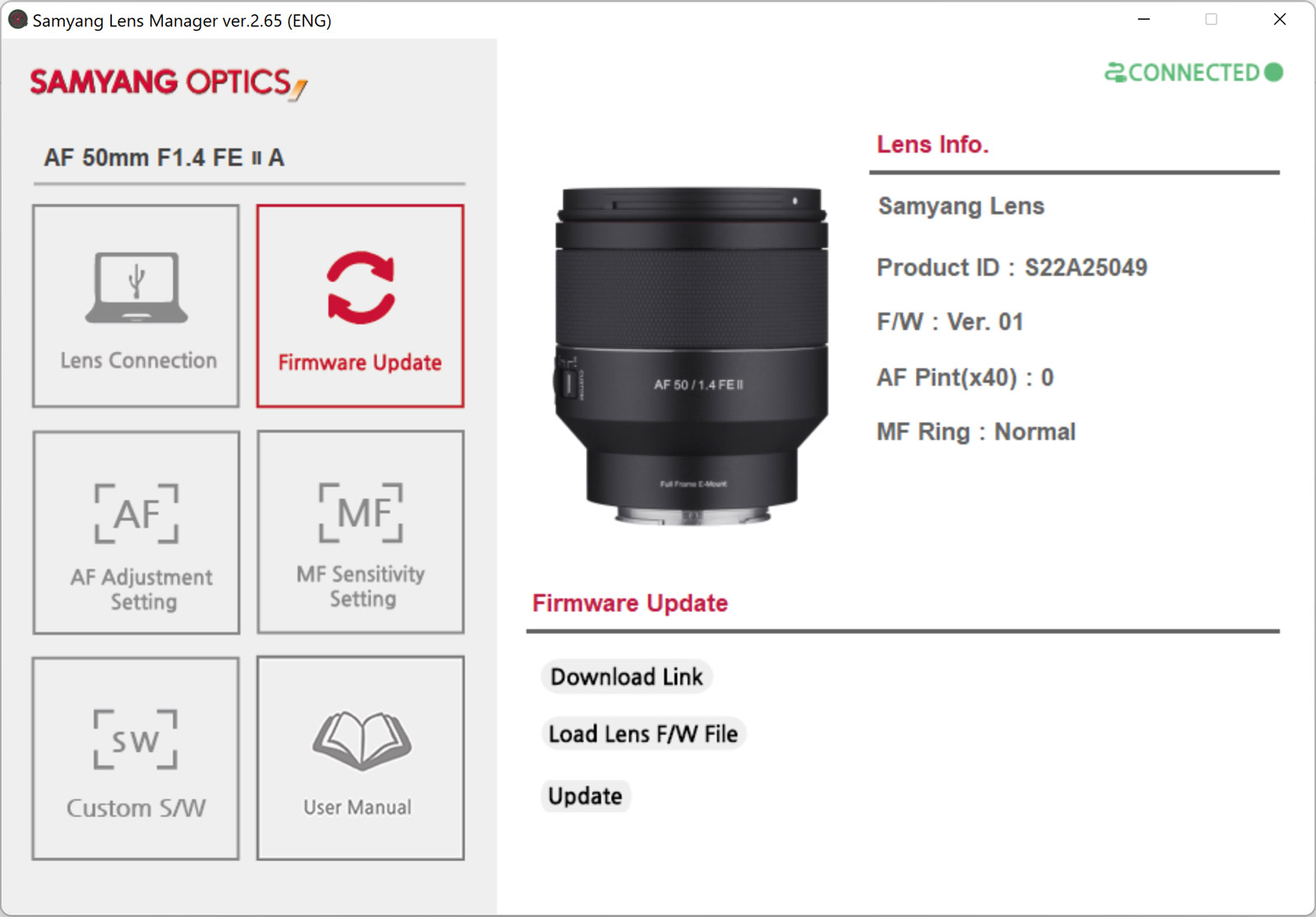Samyang Lens Station at a glance:
- £59
- USB dock for Samyang lenses
- Works with Windows and Mac PCs
- Employs Samyang Lens Manager software
- Available for Sony E, Fujifilm X, Canon EF and Nikon F
- www.samyanglens.com
Not so long ago, I doubt many photographers gave much thought to the idea that their lenses employed firmware or had settings that could usefully be changed. Instead, they were seen as passive devices that simply did what the camera told them. Sigma was the first to come up a USB Dock that attached to a lens by its mount and connected to a computer, allowing the firmware to be updated and the operation of various controls to be adjusted. Tamron makes a similar device known as a Tap-In Console, while Samyang’s is called a Lens Station.
Samyang Lens Station Key features:
- Micro USB The dock employs a standard micro USB port for connecting to your computer, with a good quality 80cm cable included in the box
- Status LED This lights up green when a lens is attached and successfully connected to the Samyang Lens Manager software
- Release button A large sliding button on the side is used to release lenses when you’ve finished updating firmware or changing settings
- Lens mounts We’re looking at the Sony E-mount version, but Samyang also makes Fujifilm X, Canon EF and Nikon F-mount versions.

Samyang’s Lens Station is supplied with a good quality micro USB cable and a protective cap for the lens mount
In terms of design, the Samyang Lens Station is very simple. It has a lens mount on one face with a sliding release button on the side, a USB port for connecting it to a computer, and a single status LED. There are no physical controls, with everything being operated by the Samyang Lens Manager software. This program looks off-putting at first, as it’s drawn at a disconcertingly low resolution and has a couple of glaring typos in its English-language version (‘AF Point’ is variously ‘Pint’ or ‘Punt’). But it works just fine.
Unlike the Sigma and Tamron docks, nothing initially happens when you connect a lens. Instead, you need to click the onscreen ‘Lens Conn’ button. The software will then detect the lens and tell you if new firmware is available. Updating isn’t necessarily a simple process, as you may have to go to Samyang’s website and download the file manually. But it does work, and I’ve successfully updated my AF 35mm F2.8 FE and original AF 50mm F1.4 FE a couple of times each.
Things get more interesting with more recent lenses, such as the AF 50mm F1.4 FE II. Here, the Lens Manager software provides a simple way of specifying which functions can be operated by the focus ring, depending on the position of the lens’s Custom switch. It’s also straightforward to adjust the manual-focus sensitivity to your liking.
Surprisingly, there’s also an AF micro-adjustment setting, which is usually considered to be unnecessary with mirrorless cameras. Unfortunately, the software’s online manual gives no explanation of why you might use it, or how to determine the optimum setting. Unless you’re having obvious problems with focus accuracy, I’d leave it alone.
Samyang Lens Manager software
Samyang’s Lens Manager software is logically laid out, with the main window showing six large square buttons on the left to switch between options. The ‘Custom S/W’ button lower right appears only when a lens with a Custom switch is connected; otherwise it says ‘Lens Station Info’.
Selecting one of these buttons shows its associated settings on the right-side panel, which are usually self-explanatory. Clicking the lower-right button downloads the user manual.
Samyang Lens Station for Sony E – Our Verdict
Like other similar devices, the Samyang Lens Station is pricey given how infrequently you’ll use it, while the software is slightly clunky and unintuitive. But it does the job as promised. If you own a few Samyang lenses, particularly recent models, it’s handy to have around.









